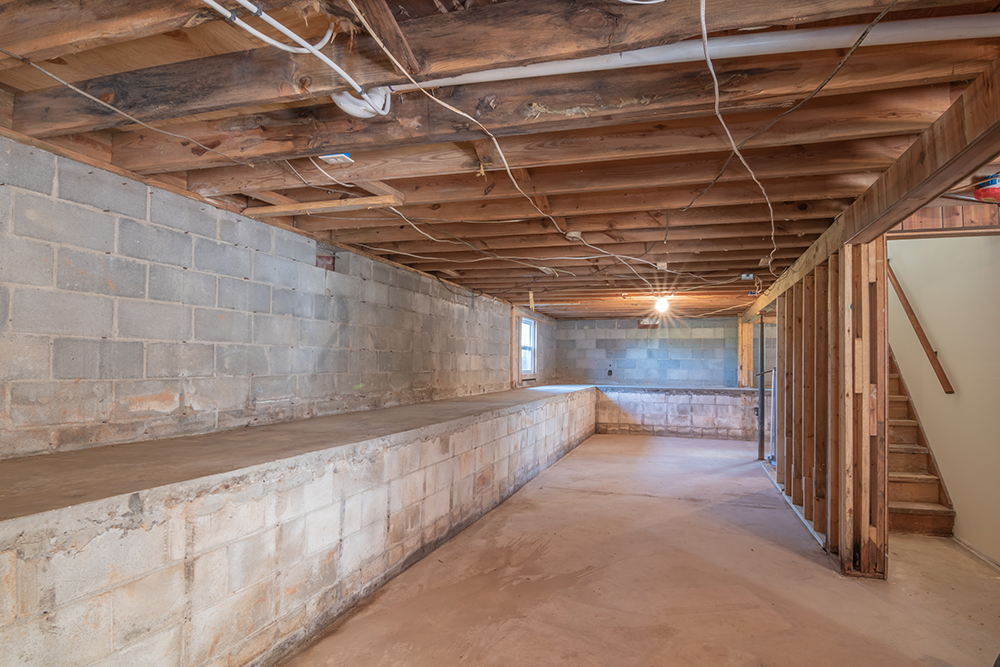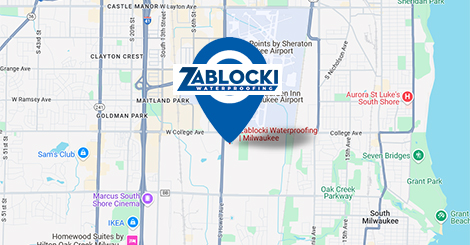If your home has a basement, chances are you will encounter basement moisture at some point in your time living there. Basement moisture can be as minor as condensation on basement walls or as significant as flooding after a particularly rainy week. In between is everything from pooling water to humidity to mold and mildew growth. It’s simple: basement moisture is not a case of if, but when.
Basements are below the soil grade, meaning they are constantly exposed to ground water. Wisconsin rain and snow cause significant soil moisture, and freezing and thawing cause that water to expand and contract, putting pressure on basement walls. Pressure can cause cracking, and the water living in the soil will find those cracks.
Most basements were constructed with this process in mind, and safeguards were put in place to prevent – or at least put off – moisture entering the basement. However, settling and normal wear and tear break down these safeguards, leaving more opportunity for moisture to enter the basement. Even the most structurally sound basement wall may eventually begin to absorb water, which will evaporate into the basement.
As a homeowner, you may wonder if there are do-it-yourself strategies for preventing basement moisture. Depending on the source of the problem, you may be able to address the issue yourself, or you may need the help of a basement waterproofing expert.
At Zablocki Waterproofing, we help homeowners in Milwaukee, Waukesha, and surrounding communities keep their basements sound and dry. Read on for our advice on when a basement waterproofing project is do-it-yourself simple, or complex enough to need an expert eye.
Basement Waterproofing Dos:
- Determine the source of the moisture. If you notice signs of basement moisture, follow the trail. If the water is entering through a crack in the wall or around a window well, you might notice wet streaks that you can follow to the source. If an entire wall feels wet, you will need to determine whether water is seeping in from outdoors or if the source of the moisture is inside the basement. To test, dry a square foot area of the wall completely with a rag, then attach a piece of aluminum foil flush to the wall and seal with duct tape. After 24 hours, peel back the foil to see if there is condensation on the underside. If so, the water is seeping through the walls. If not, the moisture is coming from the basement’s interior.
- Explore waterproofing products for bare basement walls. If you conducted the above condensation test and found that water is seeping through your basement walls, a waterproofing sealant paint might be the solution for you. Apply two thick coats of the sealant, it goes on just like a typical paint, and make sure all holes are filled. Let dry completely before applying a second coat. A good example product is DRYLOK Extreme Waterproofer, available at large home and hardware stores like Lowes. Do not apply this product over previously painted walls.
- Address obvious causes of basement moisture. If you have landscaping around the perimeter of your home that requires regular watering, consider moving it. Taking a hose directly to the soil surrounding your basement is a perfect recipe for basement moisture. Additionally, ensure gutters and downspouts are clear of debris and deposit water at least 6 feet away from the home. You will also want to ensure that the soil surrounding your home slopes away from your foundation at about a 2inch slope.
Basement Waterproofing Don’ts:
- Don’t forget to remove standing water ASAP. If you notice standing water in your basement, act immediately to remove it. Any water in the basement creates conditions for mold and mildew growth which, aside from being icky, can pose a serious health hazard. Additionally, working in standing water with electrical tools can be deadly, as it can lead to shock or electrocution. For minor puddling, use a mop to remove the water before ventilating the basement with a fan or dehumidifier. For flooding, turn off power to the basement and use a utility pump (connected to an upstairs outlet) to remove all water.
- Don’t forget to check your window wells. Window wells built without a supplementary drainage system beneath can be a major cause of basement moisture. Water pools in a window well and has nowhere to go but into the basement. If your window wells lack drainage, consider digging about two feet down within the well and filling the space with gravel. This will encourage water to drain down into the soil rather than into your basement. You will also want to caulk around the window and install sloped window well covers to discourage future water accumulation.
- Don’t forget to explore your options. While the solutions listed above can be effective in the short-term, keeping a basement truly sound and dry requires a professional solution. Luckily, you have options when it comes to deciding what waterproofing solution is right for you.
Here at Zablocki, we help Milwaukee homeowners protect their homes with state-of-the-art basement waterproofing and foundation repair solutions. Give us a call to learn more about keeping your basement sound and dry today.






